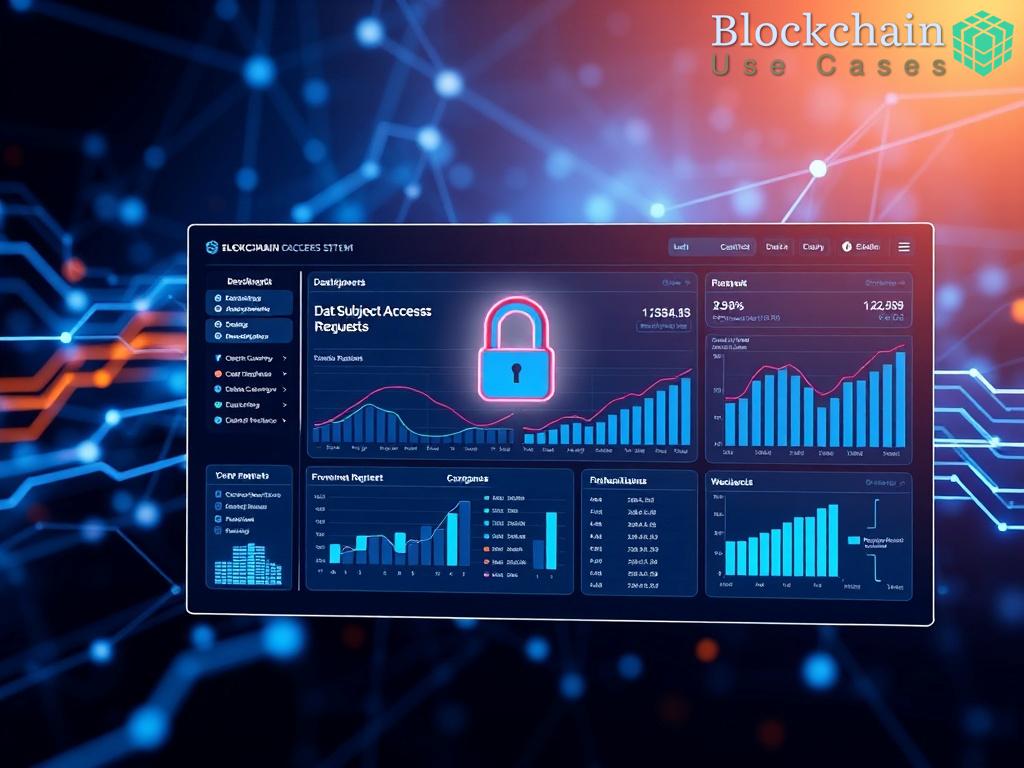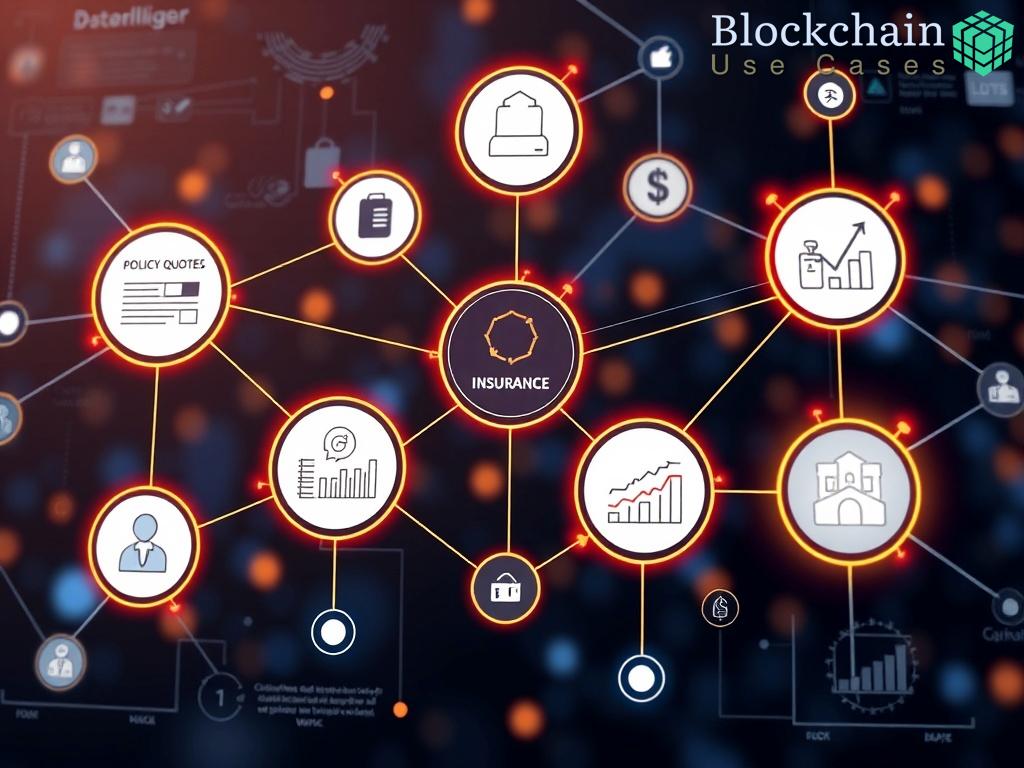Decentralized Ownership and Authorship Verification

In a world increasingly driven by digital content and innovation, the ownership and authorship of intellectual property (IP) are pivotal concerns for creators and businesses alike. With the proliferation of cloud computing, traditional methods of IP protection are being tested against new challenges posed by easy duplication and distribution of digital assets. Blockchain technology emerges as a revolutionary solution that offers decentralized ownership and authorship verification, ensuring that creators remain in control of their work while simultaneously enhancing the security and integrity of their intellectual property.
At its core, blockchain is a distributed ledger technology that records transactions across multiple computers in a way that ensures the security and transparency of data. This mechanism is particularly advantageous for IP protection in the following ways:
- Immutable Records: Once data is recorded on the blockchain, it cannot be altered or deleted, providing a permanent and tamper-proof record of ownership.
- Decentralization: By distributing data across a network of nodes, blockchain eliminates the need for centralized authorities, reducing the risk of fraud and unauthorized access.
- Smart Contracts: Automated agreements that execute predefined actions when certain conditions are met can streamline the process of IP licensing and royalty distribution.
- Transparency: All transactions on the blockchain are visible to participants, fostering trust and accountability among creators and consumers.
To better understand the advantages of incorporating blockchain technology into IP protection, the following table outlines a comparison between traditional methods and blockchain-based solutions:
| Aspect | Traditional IP Protection | Blockchain-Based IP Protection |
|---|---|---|
| Ownership Verification | Centralized authorities issue and manage IP rights. | Decentralized ledger provides transparent ownership records. |
| Security | Vulnerable to hacking and data breaches. | Immutable records enhance security against unauthorized changes. |
| Cost | High costs associated with legal enforcement and registration. | Lower costs through automated processes and smart contracts. |
| Speed | Time-consuming due to bureaucratic processes. | Instant verification and transaction execution. |
Smart Contracts for Licensing and Usage Rights
In the dynamic landscape of digital content, the complexities surrounding licensing and usage rights have often led to misunderstandings and disputes. Traditional licensing agreements can be cumbersome and opaque, affecting both creators and consumers. Smart contracts, powered by blockchain technology, present a transformative approach to streamline and clarify the licensing process. By automating the execution of contracts, these digital agreements ensure that the terms of usage are adhered to and provide a seamless experience for both parties involved.
The integration of smart contracts in licensing not only enhances efficiency but also elevates the clarity of transactions. For instance, a musician licensing their track for use in a film can set conditions directly into the smart contract, including payment terms and usage rights. Once these conditions are met, the contract executes automatically, transferring the rights without the need for intermediaries. This not only reduces operational costs but also minimizes the risk of disputes stemming from vague agreements.
Furthermore, smart contracts facilitate real-time compliance monitoring, offering an unprecedented level of transparency. Creators can embed usage tracking mechanisms within the contract, allowing them to monitor how their intellectual property is being utilized. This capability not only assures creators that their work is being used appropriately but also assists in the efficient collection of royalties. As the digital landscape evolves, the ability to adapt and enforce compliance through automated processes will be essential in maintaining the integrity of intellectual property rights.
| Aspect | Traditional Licensing | Blockchain-Based Licensing |
|---|---|---|
| Execution | Manual, often requiring intermediaries | Automated via smart contracts |
| Transparency | Limited visibility into terms and conditions | Fully transparent and auditable |
| Cost | Higher due to legal complexities | Lower due to automation |
| Dispute Resolution | Time-consuming litigation | Instant resolution through predefined conditions |
Enhanced Security Measures Against IP Theft

In the ever-evolving digital landscape, intellectual property (IP) theft remains a pressing concern for creators and businesses. Traditional security measures often fall short in safeguarding digital assets amidst the rapid pace of technological advancement. However, the integration of blockchain technology presents a formidable solution to these challenges, establishing robust security protocols that significantly enhance IP protection in cloud computing environments.
Blockchain’s Immutable Record-Keeping is one of the primary features that bolster security against IP theft. By creating unchangeable and time-stamped records of ownership, blockchain ensures that each piece of intellectual property is traceable back to its original creator. This transparency not only deters potential infringers but also provides a clear chain of custody that can be crucial in legal disputes. The decentralized nature of blockchain further complicates the efforts of malicious actors attempting to manipulate ownership records, as no single entity controls the data.
Moreover, encrypted transactions within blockchain networks serve as a powerful line of defense against unauthorized access. Each entry in the blockchain is encrypted, making it virtually impossible for hackers to alter or steal data without detection. This level of security is particularly vital for creators who rely on cloud computing to store and manage their intellectual property. The assurance that their work is safeguarded by state-of-the-art encryption technology allows creators to focus on innovation rather than worrying about potential theft.
The Role of Smart Contracts extends beyond mere transactional efficiency; they also contribute to enhanced security measures. By automating the execution of agreements related to licensing and usage rights, smart contracts minimize human error and the potential for disputes. This automation ensures that the terms are adhered to without the risk of manipulation, as the conditions are coded directly into the contract. In cases where an infringement occurs, the smart contract can automatically initiate protective measures, such as revoking access or notifying the creator, thereby acting as a proactive deterrent.
Furthermore, the implementation of real-time monitoring systems through blockchain technology allows creators to keep a vigilant eye on the usage of their IP. By leveraging analytics and tracking capabilities embedded within smart contracts, owners can receive immediate alerts if their content is used without authorization. This immediate feedback loop not only empowers creators but also reinforces the integrity of their intellectual property rights in an increasingly complex digital environment.
Transparent Audit Trails for IP Transactions
In the digital age, where the creation and dissemination of intellectual property (IP) occur at lightning speed, maintaining a clear and trustworthy record of ownership is paramount. Blockchain technology not only facilitates decentralized ownership but also provides a sophisticated mechanism for creating transparent audit trails for IP transactions. These audit trails are essential for ensuring accountability and trust among creators, consumers, and businesses.
The essence of a transparent audit trail lies in its ability to chronicle every transaction involving intellectual property on a public ledger. Each transaction is timestamped and linked to the previous one, forming a comprehensive history of ownership and usage rights. This feature is particularly beneficial in a landscape where disputes over authorship and licensing can arise. By having a clear and immutable record of all transactions, stakeholders can quickly verify claims of ownership, significantly reducing the likelihood of litigation.
One of the standout features of blockchain technology is immutability. Once a transaction is recorded on the blockchain, it cannot be altered or deleted. This characteristic ensures that the history of IP transactions remains intact and accessible, providing a reliable source of truth for all parties involved. Furthermore, each transaction is easily traceable, allowing creators and businesses to track the journey of their intellectual property from its inception to its current state. This traceability is invaluable, particularly in cases where IP theft or infringement is suspected.
Another significant advantage of transparent audit trails is real-time monitoring capabilities. Blockchain’s inherent transparency allows stakeholders to observe how their intellectual property is being utilized at any given moment. This real-time data can be crucial for enforcing licensing agreements and ensuring compliance with usage terms. For instance, if a creator licenses their work for specific uses, they can monitor the exact application of their IP and receive immediate alerts in case of unauthorized usage. This proactive approach not only safeguards creators’ rights but also reinforces the overall integrity of the IP ecosystem.
In conclusion, the integration of transparent audit trails through blockchain technology revolutionizes the way intellectual property is managed in cloud computing. By offering immutable records and real-time monitoring, creators and businesses are better equipped to protect their assets against infringement and theft. As the digital landscape continues to evolve, the importance of these audit trails will only grow, fostering a more secure and trustworthy environment for all stakeholders in the intellectual property arena.
Cross-Border IP Protection through Blockchain
As the digital economy transcends geographical boundaries, the challenge of enforcing and protecting intellectual property (IP) rights across different jurisdictions becomes increasingly complex. Traditional mechanisms often fail to provide sufficient safeguards, leaving creators vulnerable to infringement and theft. However, the advent of blockchain technology presents a promising avenue for fostering cross-border IP protection, enabling creators to secure their intellectual assets on a global scale.
By leveraging a decentralized framework, blockchain technology creates a unified platform for recording ownership and usage rights, irrespective of location. This not only enhances the visibility of IP ownership but also facilitates a more streamlined process for enforcing rights across borders. With every transaction being time-stamped and permanently recorded, creators possess a clear and verifiable proof of ownership that transcends national legal systems.
One of the key challenges in cross-border IP protection is the disparity in legal frameworks and enforcement capabilities among different countries. Blockchain technology inherently promotes global compliance through its standardized protocols and immutable records. This ensures that all parties involved have access to the same information, thereby reducing the likelihood of disputes arising from differing interpretations of IP laws.
Furthermore, the use of smart contracts can significantly simplify the management of licensing agreements across borders. These contracts can be programmed to automatically adjust to comply with local laws and regulations, ensuring that all transactions are executed in accordance with the relevant legal frameworks. This adaptability not only boosts the confidence of creators in international markets but also encourages collaboration and innovation across borders.
In the realm of cross-border IP protection, the ability to monitor and trace the use of intellectual property in real-time is invaluable. Blockchain’s decentralized nature allows for continuous oversight, enabling creators to track how their work is being utilized globally. This real-time monitoring not only assists in identifying unauthorized use but also empowers creators to take immediate action against infringements.
With blockchain’s transparent audit trails, stakeholders can easily access a comprehensive history of IP transactions, fortifying their claims with irrefutable evidence. Such capabilities are especially critical in international disputes, where swift resolution can hinge on the clarity and accuracy of ownership records. As the digital landscape continues to evolve, the importance of a robust, blockchain-based framework for cross-border IP protection will only become more pronounced, fostering a secure and equitable environment for creators worldwide.


















